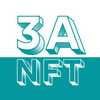In order to create our own Expected Value Breeding Theory for ZED.run, we needed to understand the top breeding theories of the platform.
The following is a general summary of top breeding theories in the ZED world (great video from Zed Insights on breeding summary). All of these have strengths, weaknesses and similarities. Regardless of the one you want to test, keeping the EV Breeding Theory in mind will let you test them for yourself with smart guardrails.
For each of these theories, there are outliers that serve as examples and exceptions to the ‘rule’, to this just remember what would happen with small sample sizes in flipping coins. In this chart imagine breeding a horse was a coin and then what it would look like if you found a coin that had flipped heads four times in a row and assuming it meant that the coin was a good breeder.
All of these theories could be right for the wrong reasons. As long as you follow the EV Breeding Theory all of them can be tested for yourself.
- XYZ Racing: Base Ability Theory
-
- Summary: https://www.youtube.com/watch?v=PPCsIPmr1uQ
and https://www.youtube.com/watch?v=xYqkcMMVH8k - Upside: Base Ability seems in line with ZED’s ‘Ability Score’ which is a known part of DNA and they use BG data to back their approach. Very interesting insights around 1600m being a look at the true ability of a horse because variance doesn’t show as highly in data. Overall most closely aligns with Expected Value Breeding Theory.
- Problem:
-
- Theory depends on the average class and 1600 performance which can easily be manipulated by stable owners.
- There is an assumption that horses can’t have a distance preference or variance for 1600 based on performance distributions that don’t prove the point. What’s more, if there can be a distance preference possible for mid distance 1600, it means there can be many false positives for high base ability.
- Summary: https://www.youtube.com/watch?v=PPCsIPmr1uQ
- DanShan: The Breeding Gene
-
- Summary: https://www.youtube.com/watch?v=5Z_TuMOzN0I
- Theory Upside: DanShan is a sports gambling guy, so he is sharp and doesn’t lose money doing this stuff. He has skin in the game with his own stable and has had breeding success. He could be right for the wrong reason in finding good breeding horses even with limited information increasing his breeding edge. His approach also looks to find undervalued horses in the system which helps the EV!
- Problem: sample size necessary to determine a true ‘breeding gene’ would require 100s of horses from a given breeding pair and can’t really be derived from current data. DanShan has a 1ETH breeding tool that he sell as a part of this theory which is expensive for new stables. Example of the margin of error of concluding a given Mare will produce a quality offspring based on 10 existing data points.
- Dr. Ian & Zed Gazette (ZG): Genetic Theory Inbreeding down the line
-
- Summary: https://www.youtube.com/watch?v=wHq-yP3JZ9w
- Upside: Really fun to think about the potential of pulling in breeding lines and adds value to a lot of donkeys in the system. This may actually be where ZED evolves breeding to, so keep an eye out.
- Problem: BG data analysis showed that inbred horses to date are actually worse than a random breeding path. Also, it assumes that ZED has created a robust genetic algorithm, which may be aspirational for a team that seems to keep things as simple as possible (went with a straight track because turns were too hard).
- BG: What do the data say
-
- Summary: https://www.youtube.com/watch?v=t0zLpQEq6Ko
- Upside: based on large data analysis of the whole breeding ecosystem. Doesn’t push theories but rather presents stats about existing theories. Breeding is largely random, favoring the bloodline hierarchy. The data clearly shows that foals will trend to one class below the average class of its parents.
- Problems:
-
- using large datasets might negate the power of finding outliers that may prove the rule.
- There is an assumption that average racing class equates to base ability despite the fact that high-class average could just as easily be a result of distance preference and variance.
August analysis of all legendary bred horses from BG.

